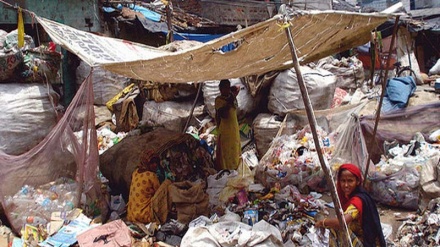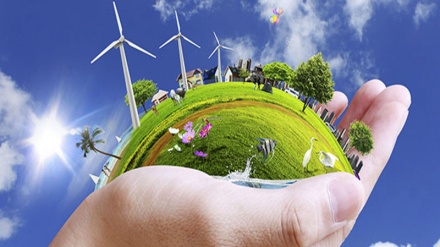We only have one planet to live on (24)
Welcome to the 24th weekly episode of the series We Only Have One Planet to Live On. Today, we study the consequences of climate change.
As a reminder, previously we spoke of air pollution and the mounting emission of greenhouse gases. Meanwhile, one of the other consequences of air pollution is climate change, which has been widely discussed after the international confab on climate change was convened in Paris, a while ago.
In definition, climate change refers to any specific change in weather conditions which takes place in the long run in a particular region or across the globe. Climate change is the manifestation of any unordinary change in the atmosphere and its related consequences in different parts of the planet. Climate change and global warming are highly important issues of concern, which have led global leaders to hold a gathering in a bid to discuss this important environmental phenomenon and to find a way to counter its related threats.
A UN-affiliated body referred to as the Intergovernmental Panel on Climate Change, in a recent report, studied the consequences of this phenomenon and for the first time presented substantial and solid evidences on the impact of climate change on the meltdown of glaciers in North Pole, formation of huge heat waves; torrential rains; and thunderstorms. The word danger was observed more than 230 times in this 2300-page report, which was prepared by roughly three hundred scientists, across the globe. The most important danger which this report referred to was the surging natural and human disasters. Meanwhile, according to a leading scientist, no one in the world would be safe from the negative impacts of climate change.
The Intergovernmental Panel on Climate Change has monitored and analyzed numerous catastrophes as of the year 2000 AD, such as the unprecedented heat waves in the US and Europe; wide-scale wildfires in Australia; and destructive flashfloods in Pakistan and Bangladesh. In the view of the members of this panel; the meltdown of polar glaciers and a rise in the sea water levels are the consequences of climate change. In the meantime, the vulnerable groups such the poor, the elderly, and children have been hit the hardest by these catastrophes.
On the other hand, some of the world states, especially underdeveloped countries, have not sufficiently paid attention to these changes and have not taken the necessary measures to counter them, and will thereby soon have to deal with destructive threats. In the meantime, the climate change in addition to inducing poverty and food shortages, stirs further wars and conflicts, and causes a surge in the number of immigrants, worldwide.
These changes have already led to global food shortage and if this situation lingers into the future, the rate of production of wheat and corn will significantly fall. The consequences of these changes are currently evident in many parts of the world, such as Africa, and the Caribbean region. This report has also mentioned the impacts that climate change leaves on the global water sources. Moreover, different aquatics and fish species are left on the verge of extinction as the result of these climatic changes; while the reduction of these aquatic and fish species in turn piles up pressure on the international community’s food sources.
The World Bank, in its recent report, has warned that if necessary arrangements are not taken for restriction of the negative impacts of global warming, the number of poor and needy people in the world would mount by another hundred million, up until the year 2030. In accordance to the related studies, Africa will take the brunt of these consequences of global warming. This is because the climate change in this continent will hike food prices by 12% up until the year 2030, which in turn will deal a heavy blow to a region, in which over 60% of family expenses are allocated for food.
The World Bank, in another part of its report, confirms that South Asia is among the regions, mostly affected by global warming. For instance, in India, a fall in agricultural products, and a swift surge in spread of different ailments will leave 45 million people in abysmal poverty, such that these people would be forced to get by with an income lesser than 1.9 USD per day.
The World Bank also warns against the negative impacts of global warming on the hygiene of the international community. In accordance to the studies carried out by this international body, the rise of temperature by two or three degrees Celsius in comparison to the period prior to the industrial revolution will expose more than 150 million other people to malaria. This comes while based on forecasts, in the next fifteen years; the number of people suffering from diarrhea will be up by another 10%.
The World Bank points out that an immediate global measure for reduction of the emission of greenhouse gases helps save millions of people from poverty. This global body also asked the wealthy states to financially assist other countries in their efforts to alleviate the negative impacts of global warming.
According to UN officials, the plans arranged by 146 countries in the current form and shape cannot prevent global warming. In this manner, the emission of carbon dioxide will continue to rise; however, the pace of this rise will be lesser than the two past decades. In the report which was released by the Intergovernmental Panel on Climate Change, last year, UN experts had warned that in case of continuation of the current trend up until the year 2100 AD, the global temperatures will rise by 3.7 to 4.8 degrees Celsius and the sea water levels will come up by 26 to 82 centimeters.
Thus, the UN has assessed the plans of these countries as a major step which makes the restriction of temperature rise to less than two degrees Celsius feasible. Experts opine that the emission of carbon dioxide and greenhouse gases should end up until the year 2100. Otherwise, under the current trend, the emission of greenhouse gases will increase by two or three folds.
The solutions which have been rendered include a fall in consumption of fossil fuels; investment in clean and renewable energies (such as the solar energy and wind power); prevention of the emission and accumulation of carbon gases, emitted from factories which are powered by coal, oil, and natural gas; and saving in the consumption of energy. Prevention of deforestation, encouragement of people to use public transports, and design and construction of smaller cities which need lesser energy are some of the presented solutions.
Although the UN assessments of the countries’ national plans have been satisfactory, one should still bear in mind that upon the implementation of these plans, the global temperature will rise by 2.7 degrees Celsius compared to 18th Century AD. A UN official says these national plans can restrict the temperature rise to 2.7 degrees Celsius until the year 2100 AD, which is rather insufficient. However, it is lesser than the foreseen four or five degrees Celsius temperature rise.
Meanwhile, most certainly, without global cooperation, the campaign against global warming and climate change would not be feasible. This fact was reiterated by President Hassan Rouhani, in his keynote speech at the Global Climate Change Summit, which was convened in New York, a while ago.
The Iranian president considered any obstruction of global cooperation in regard to removal of environmental problems to be detrimental for the global community, while noting that currently gaining access to countries’ experiences and know-how in dealing with drought, shortage of water, and environmental problems, especially air pollution throughout cities has become difficult.
The Iranian chief executive also emphasized that only issuance of warnings cannot effectively dispel the emission of greenhouse gases and there is need for attainment of a comprehensive agreement based on economic mechanisms, which would take into account the considerations of all countries in relation to development and growth.
The UN officials believe that different countries’ national plans on climate change shape the cornerstone of an international treaty for the control of global warming.
MR/SS


